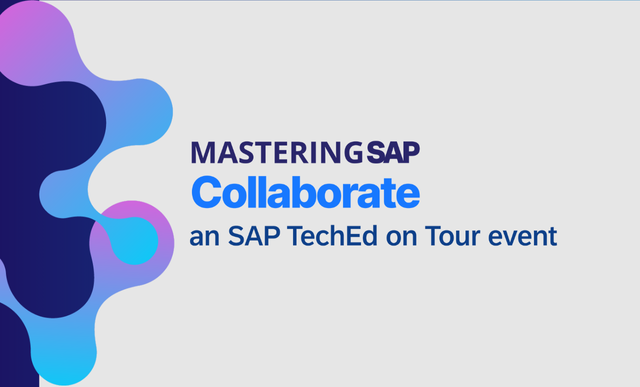Mill Products
Filter By
Browse By
- SAP Analytics and AI
- SAP Application Development and Integration
- All SAP Application Development and Integration
- SAP ABAP
- SAP ABAP Development Tools
- SAP ABAP Test Cockpit
- SAP API Management
- SAP BAPI
- SAP Basis
- SAP BRF
- SAP Business Application Studio
- SAP CMS
- SAP Design Studio
- SAP Development Tools
- SAP DevOps
- SAP EAI
- SAP EDI
- SAP Extension Suite
- SAP Fiori
- SAP Fiori Elements
- SAP Integration Suite
- SAP Low Code Application Development
- SAP Low Code Automation
- SAP Netweaver
- SAP Release Management
- SAP UI5
- SAP Web Application Server
- SAP Web IDE
- SAP Business Process Management
- SAP Center of Excellence
- SAP CIO
- SAP Customer Experience
- SAP Data and Data Management
- All SAP Data and Data Management
- SAP BW
- SAP BW/4HANA
- SAP Crystal Reports
- SAP Data Archiving
- SAP Data Center
- SAP Data Governance
- SAP Data Integration
- SAP Data Migration
- SAP Data Quality
- SAP Data Services
- SAP Data Strategy
- SAP Data Visualization
- SAP Data Warehouse Cloud
- SAP DMS
- SAP Document Control
- SAP EIM
- SAP ETL
- SAP ETL Tools
- SAP HANA
- SAP HANA Administration
- SAP HANA Deployment Infrastructure
- SAP HANA Studio
- SAP Master Data
- SAP Master Data Governance
- SAP MDM
- SAP Enterprise Architect
- SAP Enterprise Asset Management
- SAP ERP
- SAP Finance
- All SAP Finance
- SAP Accounting
- SAP AR AP
- SAP Asset Accounting
- SAP Billing Systems
- SAP BPC
- SAP BRIM
- SAP Cash Management
- SAP Central Finance
- SAP Controlling
- SAP COPA
- SAP Cost Center Accounting
- SAP Currency Risk
- SAP e-invoicing
- SAP FICO
- SAP Finance Automation
- SAP Advanced Financial Closing
- SAP Financial Consolidation
- SAP Financial Planning
- SAP FX Risk
- SAP General Ledger
- SAP Global Tax Management
- SAP Hyperion
- SAP Order to Cash
- SAP Payment Processing
- SAP Profitability Analysis
- SAP Rebate Management
- SAP S/4HANA Finance
- SAP SWIFT Compliance
- SAP Treasury Management
- SAP Universal Journal
- SAP Governance Risk and Compliance
- SAP Human Capital Management
- SAP Intelligent Technologies
- SAP Platform and Technology
- All SAP Platform and Technology
- SAP Business Technology Platform
- SAP Cloud
- SAP Cloud Connector
- SAP Cloud Integration Platform
- SAP Cloud Migration
- SAP Cloud Platform
- SAP Cloud Providers
- SAP Cloud Strategy
- SAP Digital Signature
- SAP Container Platform
- SAP HANA Enterprise Cloud
- SAP Digital Asset Management
- SAP Smart Forms
- SAP HEC
- SAP Digital Integration Hub
- SAP Hyperscalers
- SAP Infrastructure
- SAP Messaging
- SAP Quality and Testing
- SAP Security
- SAP Spend Management
- SAP Supply Chain Management
- All SAP Supply Chain Management
- SAP APO
- SAP Asset Management
- SAP Business Network
- SAP Digital Manufacturing Cloud
- SAP Digital Twin
- SAP EWM
- SAP IBP
- SAP Inventory Management
- SAP Label Printing
- SAP Logistics
- SAP Manufacturing
- SAP Manufacturing Automation
- SAP MES
- SAP MII
- SAP MM
- SAP MRO
- SAP MRP
- SAP Order Management
- SAP Plant Maintenance
- SAP PLM
- SAP Production Planning
- SAP S&OP
- SAP SD
- SAP SPM
- SAP Supply Chain Planning
- SAP Track and Trace
- SAP Transportation Management
- SAP System Administration
The mill industry is the core of any industrial manufacturing cycle. It deals with processing raw material that immediately had been extracted from nature, which requires the utmost care and effort to bring utility to the resource. This is where an enterprise management system, SAP, can help Mill product businesses.
SAP Mills Products is a digital solution offering end-to-end connectivity, integrated processes, and real-time data analytics. It’s designed specifically for metals, pulp and paper, packaging, and textiles manufacturers who need to be more agile and adaptable to survive and thrive in today’s market. By automating and streamlining operations, SAP Mills helps companies reduce costs, improve efficiencies, and make better decisions. And because it’s built on the SAP HANA platform, it provides the flexibility and scalability needed to grow as businesses evolve. As the demands of the mill products industry continue to change, SAP Mills will help companies stay one step ahead – ensuring their resiliency and sustainability for years to come.
Key capabilities of SAP Mills Products include:
- Demand management and insights, sales, inventory, and operations planning, response and supply planning, portfolio and project management, and product development and configuration
- Includes industrial insights, manufacturing networks, operations, and execution, asset operations, performance, and maintenance, asset collaboration
- Includes yard and warehouse management, transportation management, track and trace and logistics networks, order promising
- Includes corporate sustainability, holistic steering and reporting, environmental footprint management, and environment, health, and safety
- Customer Sales & Retention. Includes omnichannel commerce and customer service, configure, price, and quote to cash (Q2C), sales force automation, and sales performance management
The mill industry is the core of any industrial manufacturing cycle. It deals with processing raw material that immediately had been extracted from nature, which requires the utmost care and effort to bring utility to the resource. This is where an enterprise management system, SAP, can help Mill product businesses.
SAP Mills Products is a digital solution offering end-to-end connectivity, integrated processes, and real-time data analytics. It’s designed specifically for metals, pulp and paper, packaging, and textiles manufacturers who need to be more agile and adaptable to survive and thrive in today’s market. By automating and streamlining operations, SAP Mills helps companies reduce costs, improve efficiencies, and make better decisions. And because it’s built on the SAP HANA platform, it provides the flexibility and scalability needed to grow as businesses evolve. As the demands of the mill products industry continue to change, SAP Mills will help companies stay one step ahead – ensuring their resiliency and sustainability for years to come.
Key capabilities of SAP Mills Products include:
- Demand management and insights, sales, inventory, and operations planning, response and supply planning, portfolio and project management, and product development and configuration
- Includes industrial insights, manufacturing networks, operations, and execution, asset operations, performance, and maintenance, asset collaboration
- Includes yard and warehouse management, transportation management, track and trace and logistics networks, order promising
- Includes corporate sustainability, holistic steering and reporting, environmental footprint management, and environment, health, and safety
- Customer Sales & Retention. Includes omnichannel commerce and customer service, configure, price, and quote to cash (Q2C), sales force automation, and sales performance management
SAP software solutions to meet your needs include SAP S/4HANA Cloud, SAP Business Network for Logistics, SAP Integrated Business Planning for Supply Chain, and SAP S/4HANA Manufacturing.
Key Considerations for SAP organizations:
- How Sappi achieved cost savings for their mill businesses by implementing SAP solutions.Implementing SAP MII and real-time costing enabled significant savings for Sappi Southern Africa. Four out of eight mills were closed due to restructuring, but four remain open with the help of SAP solutions implementation. As a result of the efficiencies gained, Sappi Southern Africa planned further expansion into other areas such as pulp plants and bleach facilities by reallocating resources to strategic growth opportunities.
- The Mills industry is among the SAP industry-specific solutions supported by regular SAP Advanced Planning & Optimization and SAP SCM. SAP SCM includes specific functionalities to support special industry processes. Under the concept of “industry-specific applications,” you can find solutions like planning books in demand planning and supply network planning or production management heuristics for each business process within an industry’s scope, which might be more intricate than regular SAP Advanced Planning & Optimization apps because they have been designed with regulations unique only found within specific sectors.
- Mills industry organizations can accelerate their cloud adoption journey with SAP Rise. The journey of digital transformation is different for every organization. SAP Mills can provide a tailored approach that meets you where you are on your journey – whether you have yet to move to cloud ERP or are looking to enhance your capabilities with SAP industry cloud solutions. RISE with SAP solution can enable Mill businesses to innovate digitally. Regardless of the current phase of digital transformation to the cloud, SAP Mills Products can help enhance capabilities and functionality.
12 results
-

OWI Enhanced their Supply Chain & Logistics Operations with S/4HANA
Reading time: 1 min
Old World Industries (OWI) is a global leader in the automotive and chemical manufacturing industry, best known for its PEAK and BlueDEF brands. With a complex supply chain and extensive global operations, OWI needed a robust ERP system to support its growth and maintain operational efficiency. Click to view the full case study results!
-

- SAP Security
 Premium
Premium
Masterclass: Reinvent the Wheel with SAP S/4HANA Security
SAP has delivered nearly 15000 apps in the Fiori library. With this innovation driven to enhance user experience, there is a significant gap in managing risks. Prior to SAP S/4HANA only a single database user was needed, now with eHANA reporting users exist directly on the database and even datacenters are changing from private data centers to…
Become a Member
Unlimited access to thousands of resources for SAP-specific expertise that can only be found here.
Become a Partner
Access exclusive SAP insights, expert marketing strategies, and high-value services including research reports, webinars, and buyers' guides, all designed to boost your campaign ROI by up to 50% within the SAP ecosystem.
Upcoming Events
-

Mastering SAP Collaborate, an SAP TechEd on Tour event
November 12 - 14, 2025
Sydney, New South Wales
Australia
View Event
Related Vendors
Your request has been successfully sent


